As Thanksgiving nears, we've been reflecting on the things that we're grateful for this season. First and foremost, we're thankful for the child care professionals who are taking care of our nation's 12.5 million children under age 6 who are in child care. These providers work long hours, for often unlivable wages, to provide safe, high-quality care for our youngest family members. We are so thankful for the time and love they give to the children in their care.
Giving Thanks for Child Care Professionals, Advocates and Policy Wins
Topics: News
Continue ReadingCensus 2020 - Count All Kids Alert
Once every 10 years, our nation undergoes the gargantuan task of “counting every one, only once, and in the right place.”
An accurate census count is critical to the federal government accurately distributing more than $800 billion in federal funds each year. Accurate counts in the census affect federal funding distributions for many public programs i, including child care subsidies and the Child and Adult Care Food Program (CACFP). They also help allocate funding more equitably for other programs children rely on like the Special Supplemental Nutrition Program for Women, Infants, and Children (WIC), the Children’s Health Insurance Program (CHIP), Medicaid, foster care, adoption assistance, Section 8 of the House Act of 1937, Low Income Home Energy Assistance Program (LIHEAP), and community health centers.
Topics: Systems Building, Family & Community Engagement, Policy & Advocacy
Continue ReadingExamining Gaps in Infant-Toddler Care Across New York
It’s no secret that families across the country with infants and toddlers struggle to access licensed child care more than families with preschoolers - Child Care Resource and Referral (CCR&R) agencies have been shouting this from the rooftops for decades!
Over the past two years, Child Care Aware® of America has worked with CCR&Rs in five states to quantify the challenges families with infants face through our Mapping the Gap™ project. In our latest story map, Mapping the Gap™ in New York, we found many more examples of communities in which the supply for infant care does not meet the demands of families. For the estimated 425,000 infants and toddlers living across the state, there are only an estimated 127,000 slots, leaving an approximate supply and demand gap of 298,000 slots. This means that roughly 70% of infants and toddlers in New York might not have access to licensed child care in their communities.
Topics: Systems Building, Family & Community Engagement, Policy & Advocacy
Continue ReadingResearch Round Up: Mental and Behavioral Health
Trauma-Informed Behavioral Parenting for Early Intervention
Agazzi, H., Adams, C., Ferron, E., Shaffer-Hudkins, E., and Salloum, A. Journal of Child and Family Studies (May 2019).
Background: Children who experience traumatic events like divorce, abuse and domestic violence (what we call Adverse Childhood Experiences, or ACEs) may have difficulty forming supportive relationships and have higher rates of poor mental health later in life. Children with disabilities experience higher rates of ACEs than their typically-developing peers, yet evidence-based practices to address social/emotional needs often left these children out. These programs also tend to be expensive and require additional training.
Topics: Health & Safety
Continue ReadingResearch Round Up: Workforce
Association Between Early Care and Education Teacher Characteristics and Observed Classroom Processes: Strengthening the Diversity and Quality of the Early Care and Education Workforce Paper Series
Johnson, A., Partika, A., Schochet, O., and Castle, S. Urban Institute (October 2019)
Background: Early Care and Education (ECE) providers play an important role in helping children learn, grow and successfully transition to elementary school. However, when ECE providers are experiencing high levels of stress and financial insecurity, it can affect the overall quality of care they provide. This study looks at whether workforce supports such as paid leave and a sense of teamwork, and teacher experiences, like exposure to trauma or financial stress, impact teacher-child interactions.
Topics: Health & Safety
Continue ReadingHealth Resource Spotlight: Eliminating Lead in Home-Based Programs
The problem
Lead is unsafe to consume, inhale, or absorb at any level. Yet lead-based paint is common in homes built before 1978 and a home’s drinking water or soil can be contaminated with lead. How can home-based providers protect themselves and the children in their care?
Topics: Health & Safety
Continue Reading








